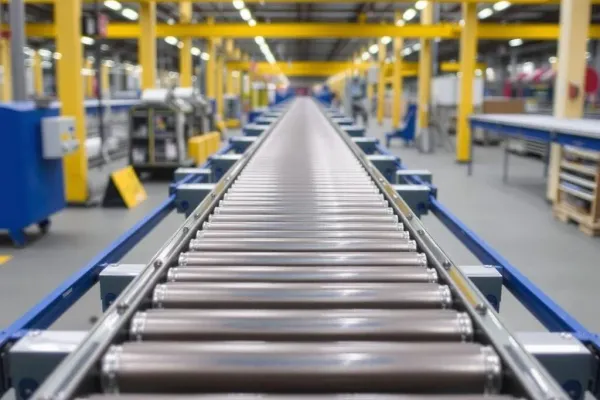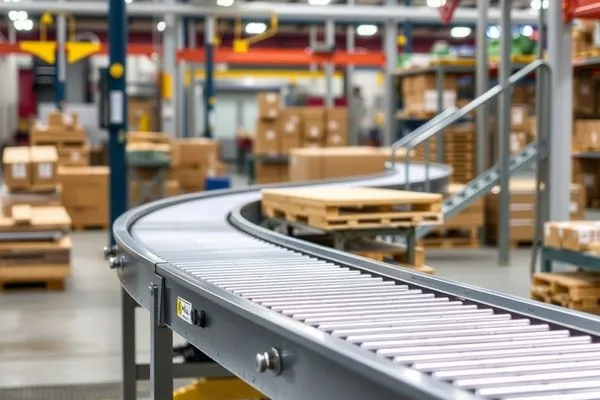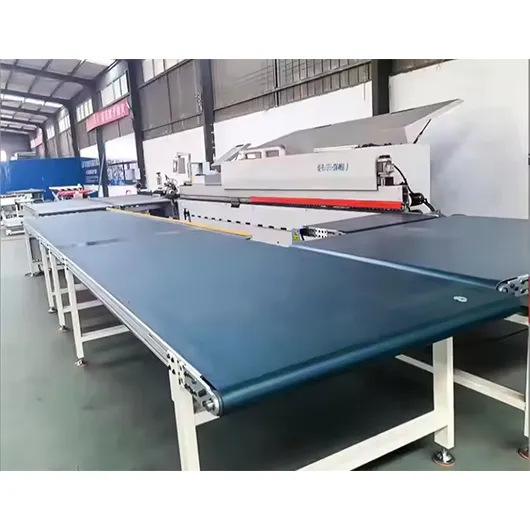Avoid your inquiry is delay response, please enter your WhatsApp/Skype along with the message, so we can contact you at the very first time.
We will reply you within 24 hours. If for urgent case, please add WhatsApp/WeChat: ,. Or call directly.
My plant faced soaring labor bills and uneven output. The fastest fix seemed to be a new conveyor, yet every quote ranged wildly. I had to learn why.
A typical light-duty conveyor for consumer-goods plants starts near USD 8 000. Final cost can triple once length, controls, layout, and compliance add up.

I will show you the price puzzle in plain words. Stay with me, and you will leave with a short list of cost levers you can really act on.
Labor shortages raise stress. A conveyor looks simple, but a bill of materials hides dozens of knobs that push price up or down.
Total conveyor cost1 equals equipment price plus layout, controls, safety, and compliance. Length, speed, load rating, and environment create the biggest swings.

Buying my first full line in 2016, I learned that the steel frame was only half of the bill. The rest lived in motor specs, sensors, guards, and layout planning. Below I break each factor into three buckets. Use the table as a checklist before you call vendors.
| Cost Bucket | Main Drivers | Typical Share of Total | Notes from my floor |
|---|---|---|---|
| Mechanical | Length, width, frame material, load class | 30 – 50 % | Stainless adds 20 % over mild steel; heavy-duty rollers add 15 % |
| Electrical & Control | Motor size, VFDs, PLC, HMI, safety relays | 15 – 30 % | Upgrading to smart PLC cut downtime 12 %, but raised upfront cost 8 % |
| Integration & Compliance | Layout design, CE / OSHA guarding, documentation | 20 – 35 % | Third-party validation saved audit fines later |
Frame length and width scale almost linearly with price. Yet two hidden multipliers lurk. First, stainless or aluminum chosen for wash-down or clean-room duty can add up to 20 % over mild steel. Second, live load per meter pushes roller diameter and motor torque. I once ordered a line that needed 20 kg capacity per pallet zone; the vendor swapped in thicker rollers and a bigger gearmotor, adding USD 1 900 to the quote.
A fixed-speed motor is cheap. My plant prefers variable frequency drives (VFDs) so we can match speed to upstream fillers. That choice adds about USD 400 per drive, but it saved us one full-time operator who used to adjust flow by hand. PLC options matter, too. A basic relay logic box is under USD 600. A full-blown Ethernet-IP Allen-Bradley rack with HMI can cross USD 3 500 before wiring.
Never forget design hours. Floor space is tight, and every elbow or merge needs drawings, simulations, and sometimes mezzanine supports. When we moved our lotion line, the integrator billed 60 engineering hours just to ensure pallets cleared a low ceiling. That planning avoided later re-work, but cost USD 4 800 upfront.
I once asked three vendors for a “simple” 25-meter run. The belt quote was the cheapest, the roller sat in the middle, and the overhead blew my budget. Different physics, different bills.
[Belt conveyors](https://starscreativity.com/return-pvc-belt-conveyor-for-edgebander/ "*Belt conveyors") start near USD 300 per linear meter, gravity rollers near USD 180, live rollers around USD 400, and overhead trolleys can top USD 1 000 per meter.**

Each conveyor style serves a niche. If you match type to duty early, you avoid over-engineering. Below is my field guide.
| Type | Entry Price (USD/m) | Best For | Key Cost Drivers | My Field Tip |
|---|---|---|---|---|
| Gravity Roller2 | 180–250 | Cartons on slope | Frame rigidity, roller spacing | Keep slope <5°, add brake rollers for safety |
| Belt (Slider Bed) | 300–450 | Pouches, small parts | Belt material, drive pulley | Nitrile belt lasts longer than PVC in oily zones |
| Live Roller (MDR/Chain-Driven) | 400–750 | Totes, cartons, pallets | Motor count, zone control | MDR saves energy but raises parts count |
| Overhead Enclosed Track | 1 000+ | Paint shops, free floor space | Curves, switches, chain type | Budget extra for structural steel and catwalks |
A belt slides over a simple bed. Few moving parts mean low BOM. Yet high-heat or chemical belts can add 30 % or more. My soap line needs oil-resistant nitrile; that premium belt costs USD 45 per meter against USD 25 for basic PVC.
Gravity is cheap but needs floor slope and manual push. Motor-driven rollers (MDR) use 24 VDC motors inside rollers. They cut noise and energy but add electronics. Chain-driven live rollers handle heavy pallets but need guard rails and lube points.
Overhead designs free floor space, great for busy filling halls. They need structural hangers, curves, and safety drop guards. Installation labor climbs fast. In one cosmetics plant, I spent more on roof reinforcement than on the conveyor itself.
My first purchase covered only equipment cost. Two months later the CFO flagged the overtime bill from installers and electricians. I learned that “FOB factory” is only page one.
Budget at least 20 – 40 % of equipment price for installation, plus yearly spend of 3 – 5 % for maintenance3 and 1 – 2 % for energy.
Hidden costs fall into three time frames: one-time install, recurring upkeep, and lifecycle energy. Miss one, and ROI slips.
| Cost Layer | Typical Ratio to Equipment | What Drives It | How I Cut It |
|---|---|---|---|
| Installation Labor | 10–25 % | Rigging, wiring, controls tuning | Run conduit before machine arrives |
| Site Prep & Permits | 5–10 % | Floor trenches, guard rail codes | Use bolt-up stands to avoid concrete |
| Training & Documentation | 2–5 % | SOP writing, video manuals | Record vendor walk-through on phone |
| Annual Maintenance | 3–5 % | Belts, bearings, lube, sensors | Stock common spares in crib |
| Energy | 1–2 % per year | Motor efficiency, duty cycle | Fit VFD sleep mode between shifts |
Rigging crews charge per hour. My lotion line needed a boom lift because the dock door was low. That oversight cost an extra USD 1 200. Now I measure door clearances and draw rigging paths.
A belt change every 18 months is normal. But ignoring tension shortens life. I assign one operator to check belt center lines weekly. That five-minute task saved USD 2 600 in unscheduled belt swaps last year.
Electricity may look small, yet corporate sustainability teams watch kWh. We logged a switch from standard gearmotor to IE3 premium. The payback took 28 months. After that, our sustainability report gained a green tick.
Cash is tight, but safety audits are stricter. I need both low cost and uptime. Here is my playbook.
Standardize modules, right-size speed, automate lubrication, and negotiate long-term spares to cut total cost up to 25 % without extra risk.
Cost cuts come from design, sourcing, and maintenance discipline. Mix them for the best effect.
| Lever | Action Step | Expected Saving | Caveat |
|---|---|---|---|
| Modular Frames4 | Pick catalog widths and bolt-on legs | 10–15 % | May limit curve angles |
| Speed Right-Sizing | Set VFD max to real throughput need | 5–8 % energy | Leave headroom for peak orders |
| Auto Lube Systems | Install drip-free units on bearing banks | 3–5 % maintenance | Check lines for leaks quarterly |
| Spares Bundles | Buy belts, rollers with machine | 7–10 % parts | Storage space needed |
My older lines used one-off stainless beams. When a leg bent, we waited six weeks for a weldment. New lines use 100-mm slotted aluminum that any local shop stocks. Part price dropped 12 %, downtime fell.
We once ran cartons at 60 m/min just because the drive could. After a week of jams, we throttled to 45 m/min. Jams vanished. Energy meter showed 11 % lower draw. Payback was instant.
Manual greasing slips when shifts change. Auto lube injectors cost USD 60 each. Over a year they paid back through fewer seized rollers. OSHA inspectors also like clear lube lines, so safety score rose.
I negotiate a two-year spare kit when I sign a PO. Vendors discount large kits 15 %. Holding parts on site means I fix a photo-eye fault in ten minutes, not two days.
Know every cost lever, pick the right conveyor type, budget hidden fees, and apply smart savings. The right homework turns scary quotes into clear, bankable numbers.
Understanding the total conveyor cost is crucial for budgeting and planning your project effectively. Explore this link for detailed insights. ↩
Exploring the pros and cons will help you determine if gravity roller conveyors are suitable for your specific application. ↩
Effective maintenance budgeting ensures longevity and efficiency of your equipment, saving you money in the long run. ↩
Explore how modular frames can enhance efficiency and reduce costs in conveyor systems, ensuring better performance and safety. ↩